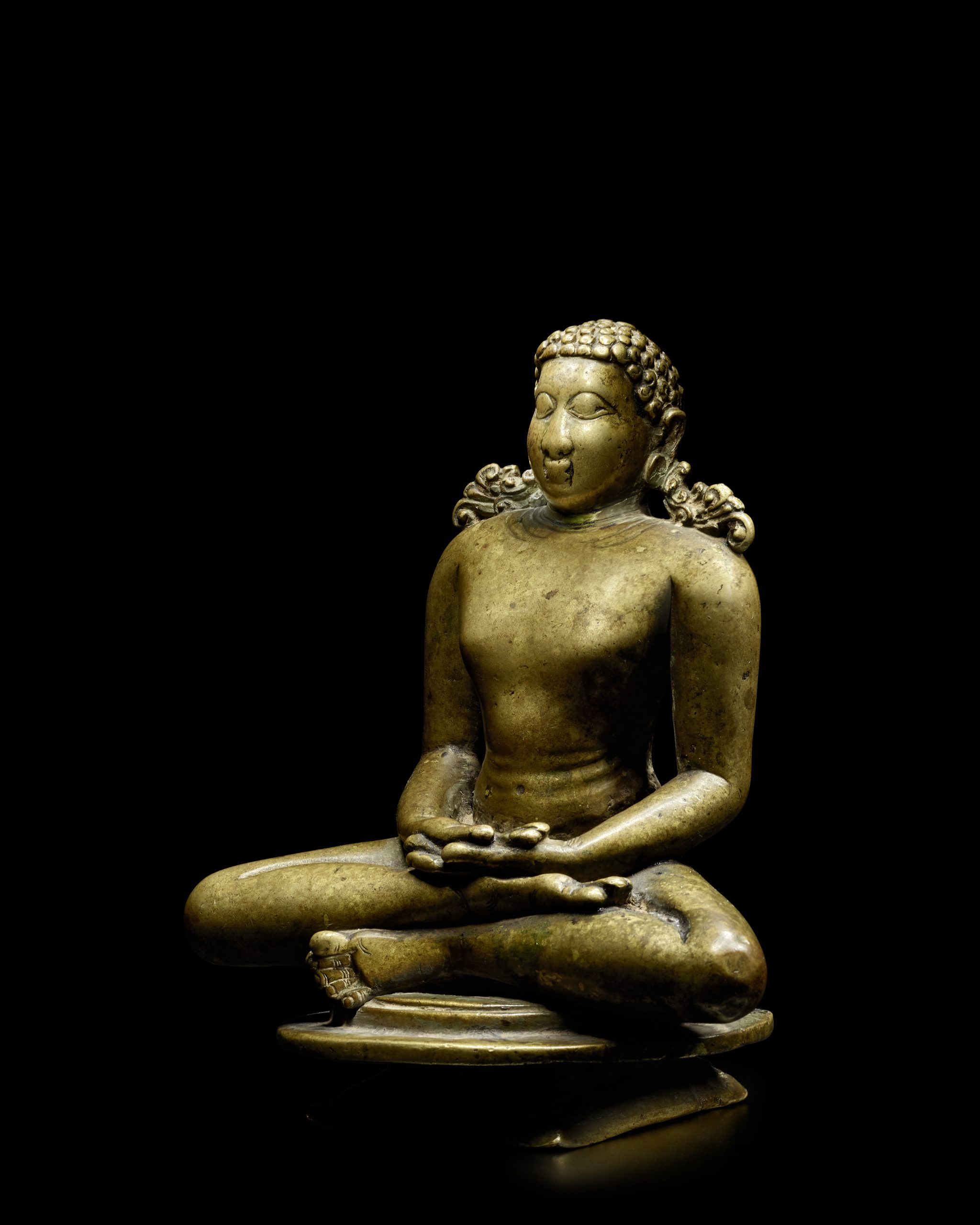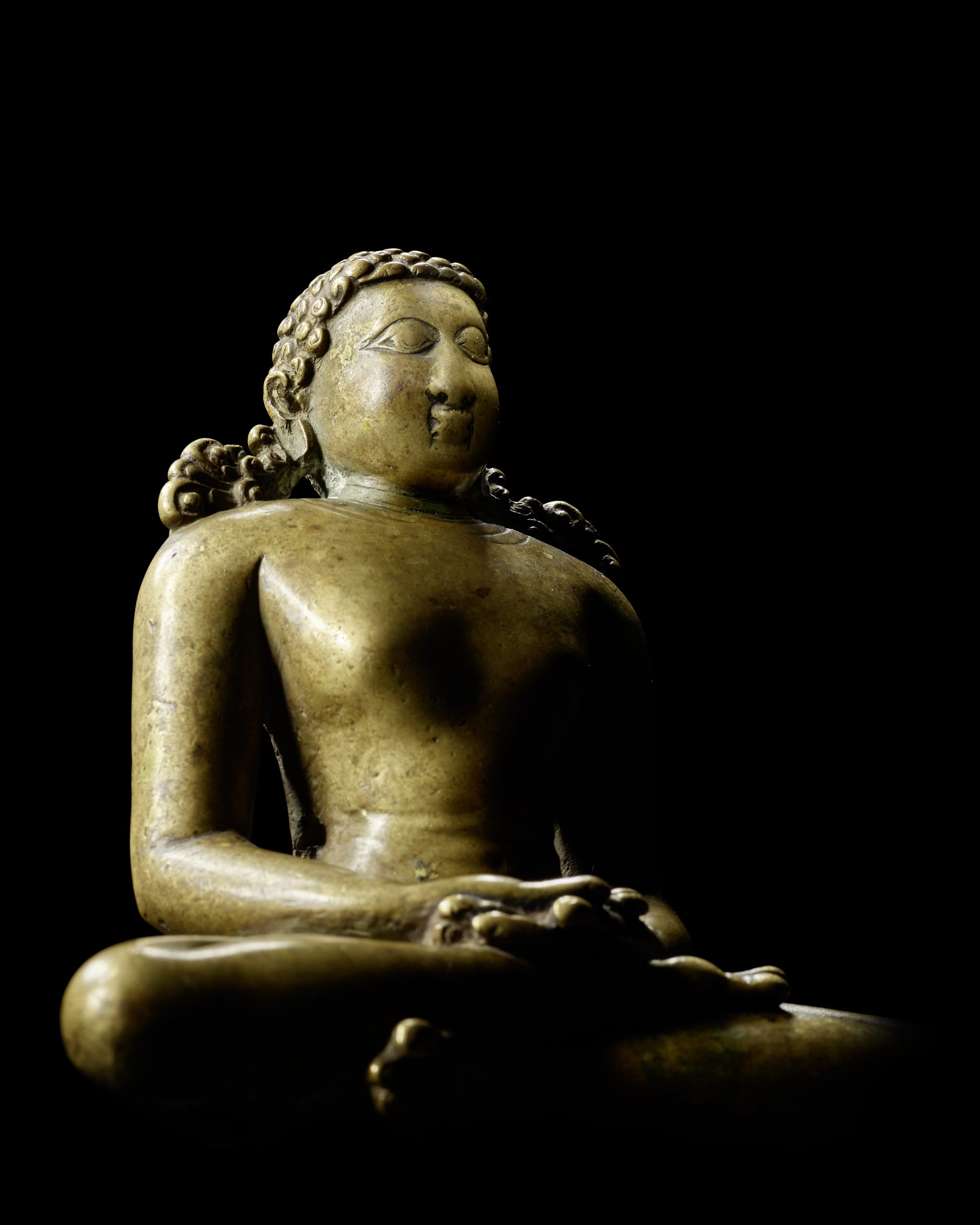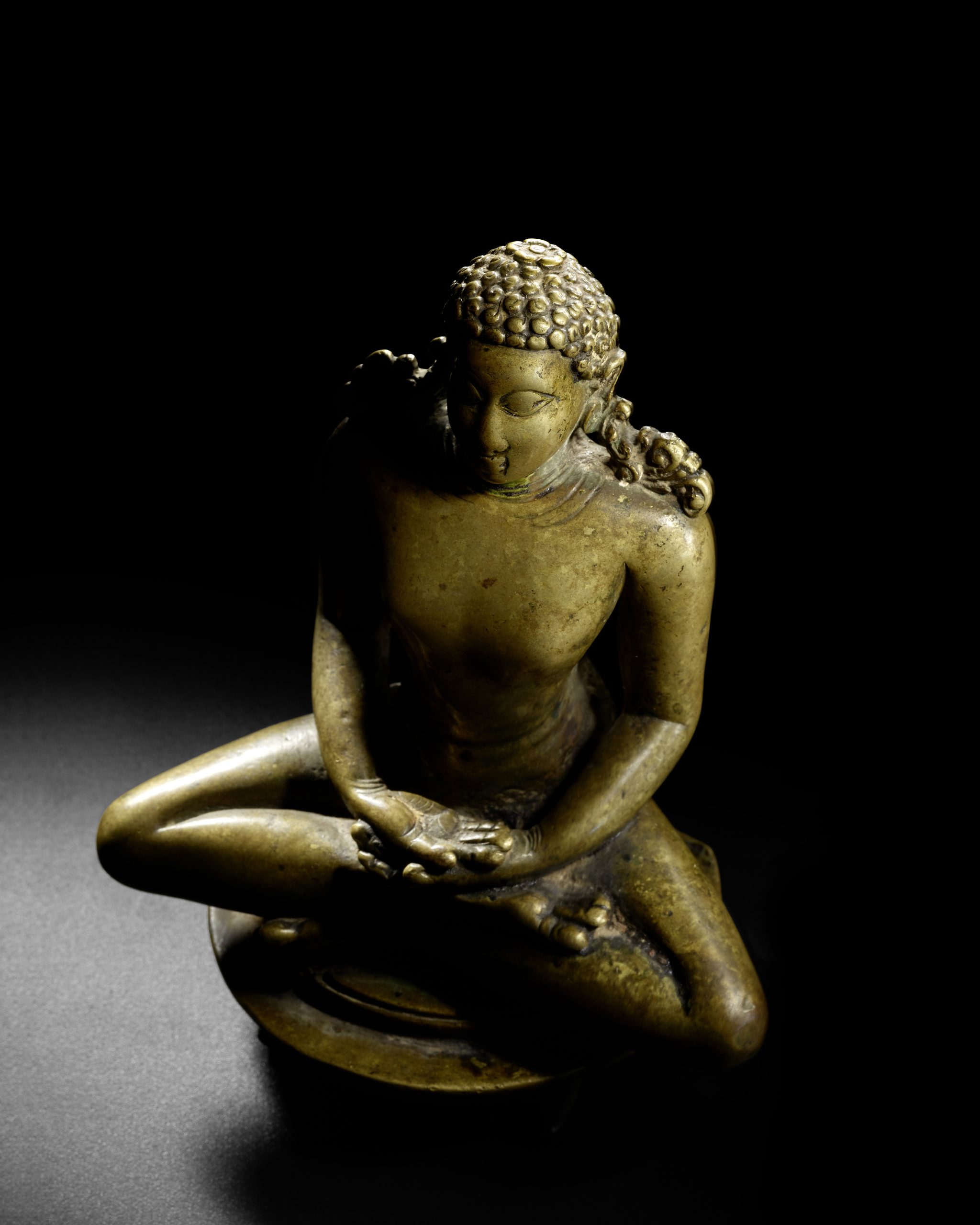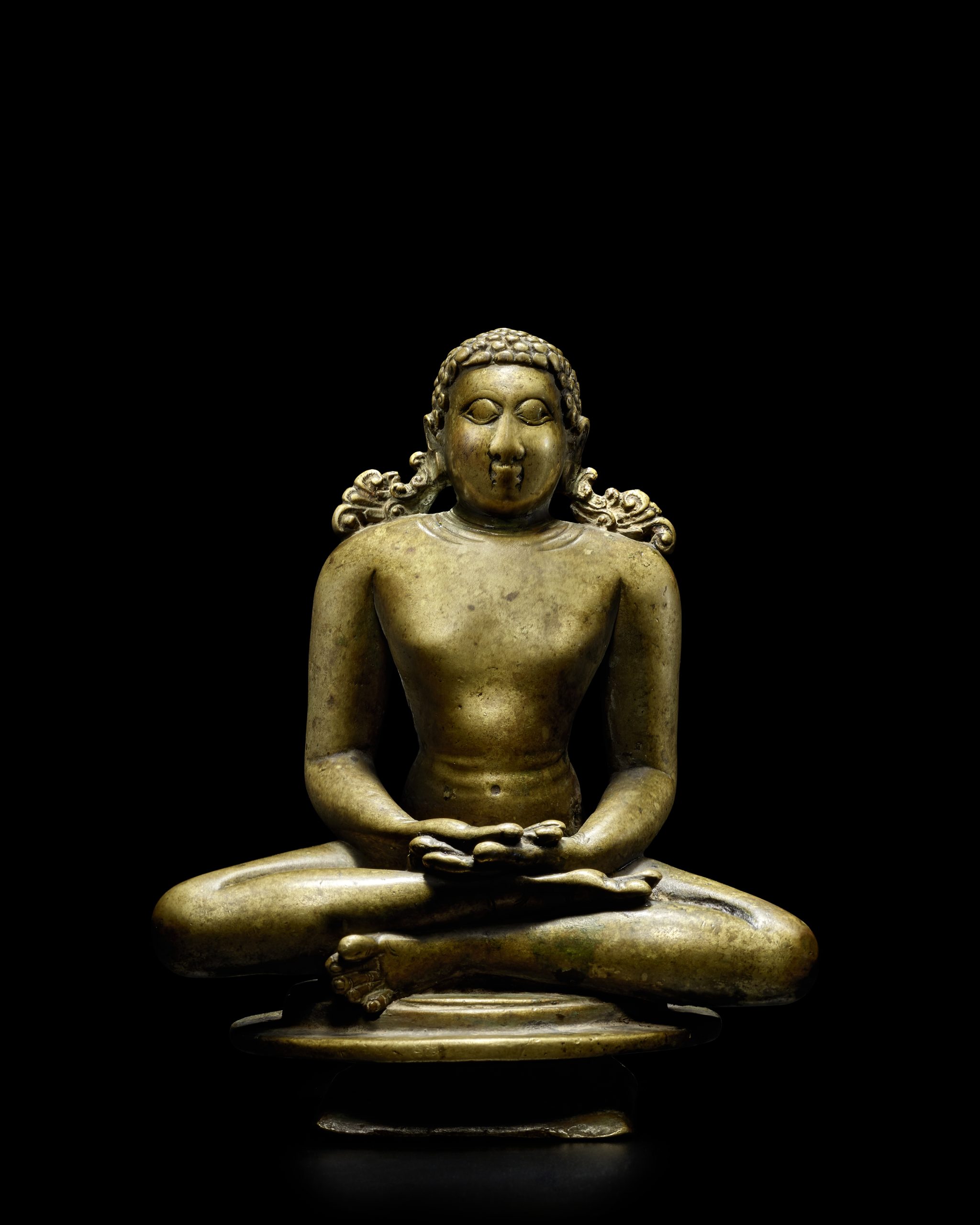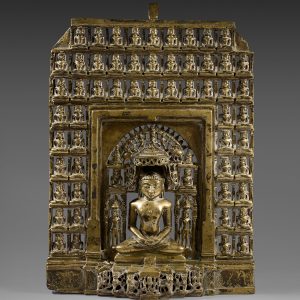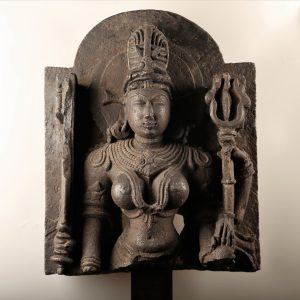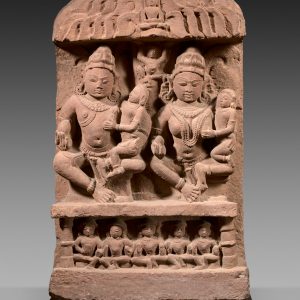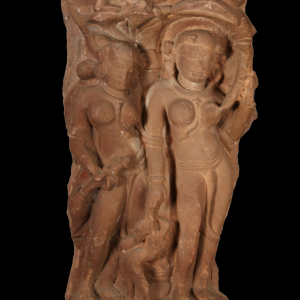Seaten Ṛṣabhanātha
95 000,00€
Brass alloy
Karnataka
Ganga period, c. 900
H. 14.6 cm
Description
As Dr Pal writes, this charismatic Indian bronze is remarkable for its powerful modelling, which adds to the characteristic simplicity of Jain sculpture. The Jina depicted here is unadorned, but a lotus blooms from his crown-chakra, seen from above.
Jain mythology and the role of Rishabhanatha
The first of the twenty-four Jain saviours, Rishabhanatha (also known as Adinatha, “Lord of the Beginning”), is one of the two Jinns who can be identified without any particular attributes, in his case only by his long braids. Here, they form a particularly decorative pattern, comparable to the flaming tail of a kinnara. Devotees place Rishabhanatha’s origin millions of years ago, at the beginning of our current cosmic cycle, and say that in addition to becoming a Tirthankara, he offered human beings a range of practical and social skills.
A striking canon
The sculptor has provided this Adinatha with long, slender legs, thus accentuating the proportions of his bronze and strengthening his presence. The work imposes itself on the viewer with its large, bewitching eyes, a broad nose, high cheekbones, broad shoulders, a powerful chest and a slim, supple waist.
The Jina’s hands and feet are perfectly represented with the toes oriented at different angles. The visible palm is rendered with impressive naturalism, and the artist’s efforts to delineate each finger show his attention to detail.
The Power of Jainism under the Ganga Dynasty
Made in the Deccan during the Western Ganga period, this bronze is a fine example of a very rare body of sculpture. With their capital located at Talakad, the Western Ganga dynasty controlled much of the Deccan plateau from the 4th century until their subjugation by the Cholas in 1004. Communities of Digambara Jains flourished under their rule and were among their main supporters.
Jinas depicted standing are actually much more common under the Western Ganga and later the Chola; and are all very similar in form. They are also generally made of less shimmering and colourful alloys, have more rounded faces and less striking eyes than the present piece.
Publication :
Pal, the elegant image: bronzes from the Indian subcontinent in the Siddharth K. Collection. Bhansali Collection, New Orleans, 2011, p.104, fig.6.
Provenance :
Private American collection, acquired in London, 1970s.
The previous owner, Siddarth K. Bhansali (mentioned in the title of the publication) has agreed to be named and associated with this piece. The date and place of acquisition of the work are given from his personal recollection.

